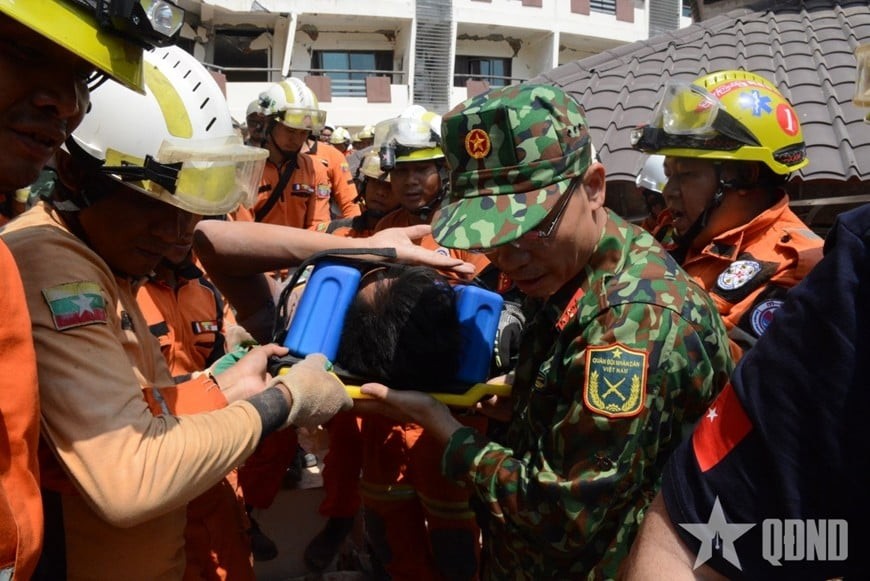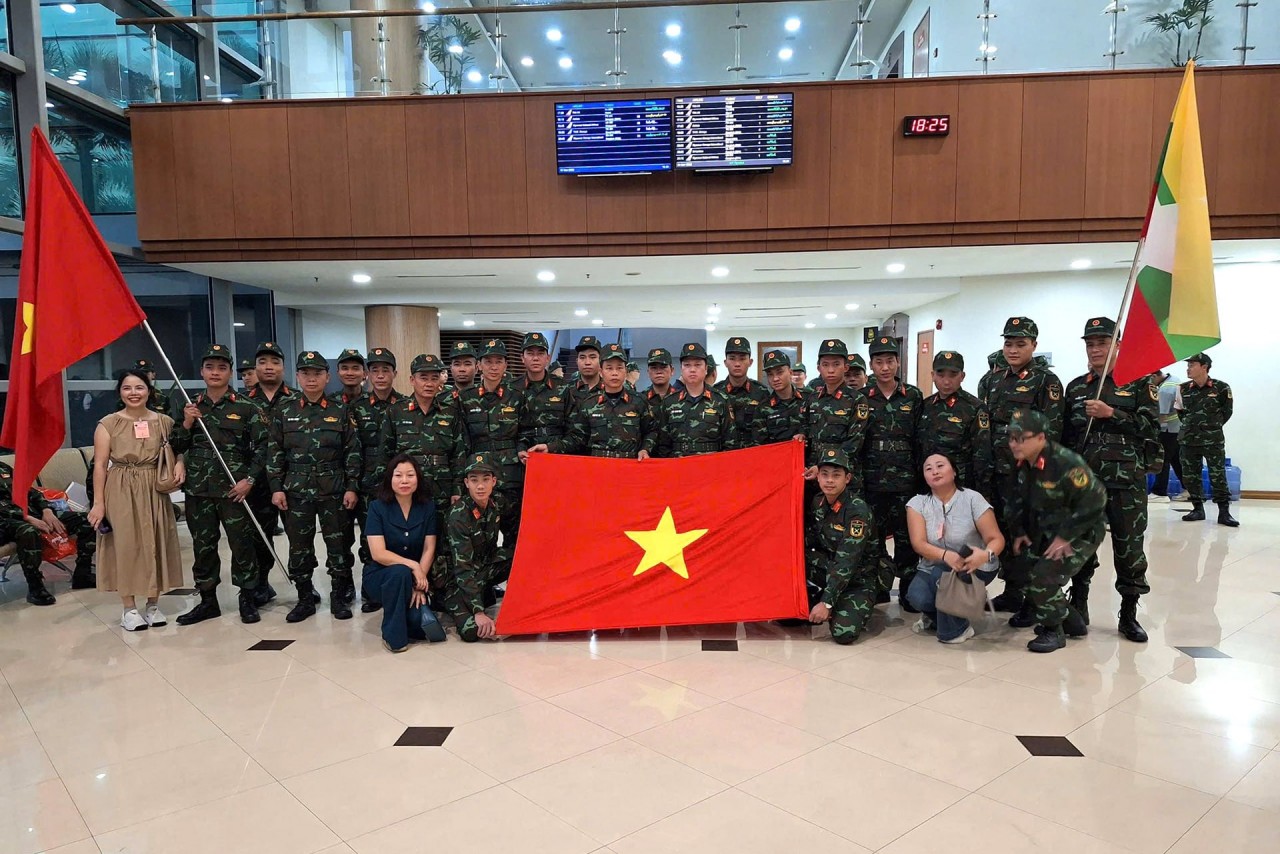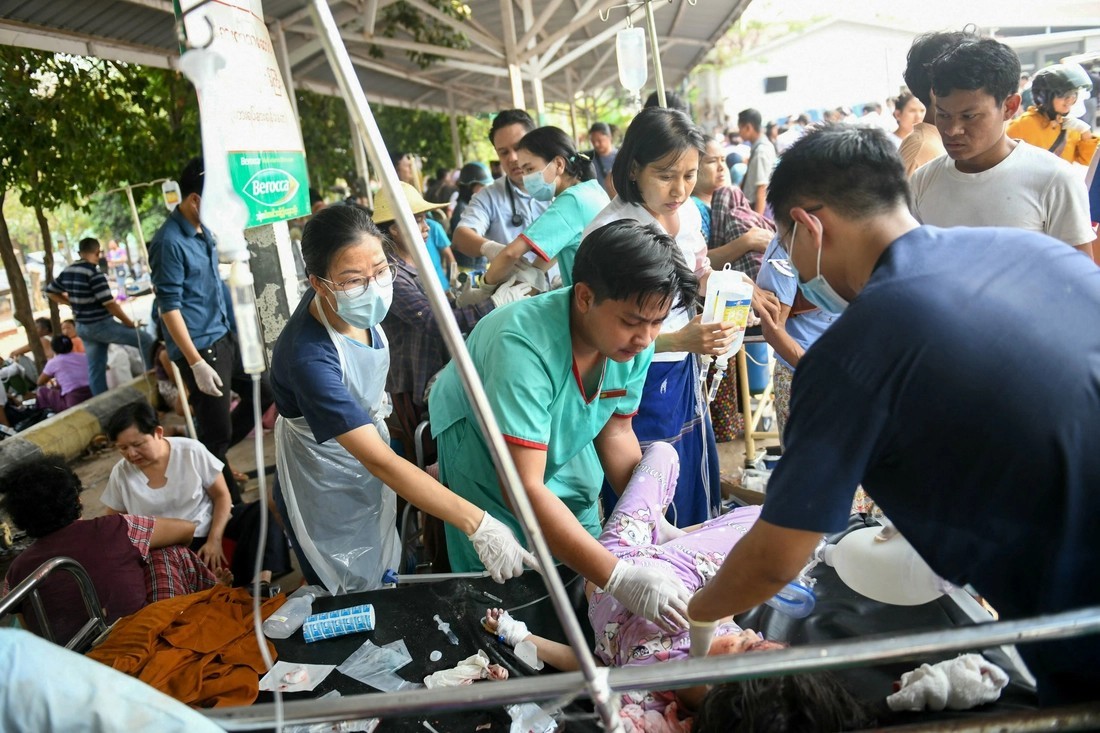Visit Mrauk U - The Dreamy Forgotten Heaven of Myanmar
Mrauk U is an archaeologically important town in northern Rakhine State, Myanmar. It is also the capital of Mrauk-U Township, a sub region of the Mrauk-U District. From 1430 until 1785, it was the capital of the Mrauk U Kingdom, the most important and powerful Rakhine (Arakanese) kingdom.
Mrauk U lies roughly 11 kilometres (6.8 mi) east of the Kaladan River on the banks of its minor tributaries. The town is located on a small outcrop of the Rakhine Yoma on the eastern side of the Kaladan's alluvial plain. Thus, the surrounding countryside is hilly yet also contains a great deal of marshes, mangroves and lakes.
History of Mrauk U
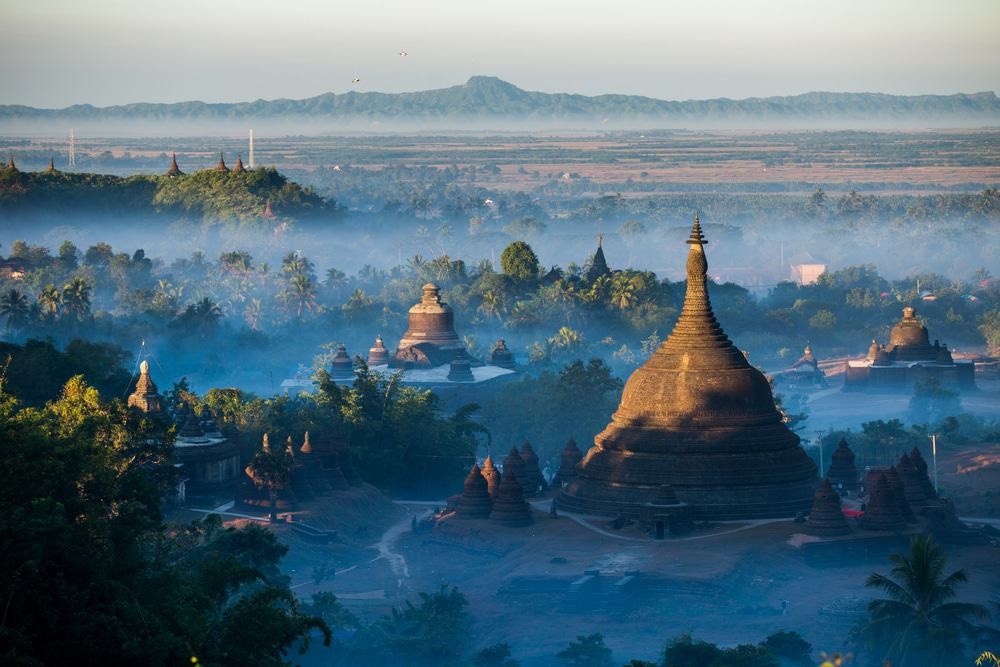 |
| Photo: Shutterstock |
In 1433, King Min Saw Mon established Mrauk U as the capital of the last unified Arakanese Kingdom. The city eventually reached a size of 160,000 in the early seventeenth century. Mrauk U served as the capital of the Mrauk U kingdom and its 49 kings till the conquest of the kingdom by the Burmese Konbaung Dynasty in 1784.
During British colonial rule, Mrauk U was known as "Mrohaung" or "Myohaung". The area was the site of fighting during the Arakan Campaign, in the latter part of the Second World War.
On 16 January 2018, Rakhine protesters rioted near a government building in Mrauk U after a ban was issued by local authorities on an event that commemorated the anniversary of the Kingdom of Mrauk U's dissolution. In response to protesters attempting to seize the government building, police fired live ammunition into the crowd, killing seven and wounding twelve.
Due to its proximity to the Bay of Bengal, Mrauk U developed into an important regional trade hub, acting as both a back door to the Burmese hinterland and also as an important port along the eastern shore of the Bay of Bengal. It became a transit point for goods such as rice, ivory, elephants, tree sap and deer hide from Ava in Myanmar, and of cotton, slaves, horses, cowrie, spices and textiles from Bengal, India, Persia and Arabia. Alongside Pegu and later Syriam, it was one of the most important ports in Myanmar up until the eighteenth century.
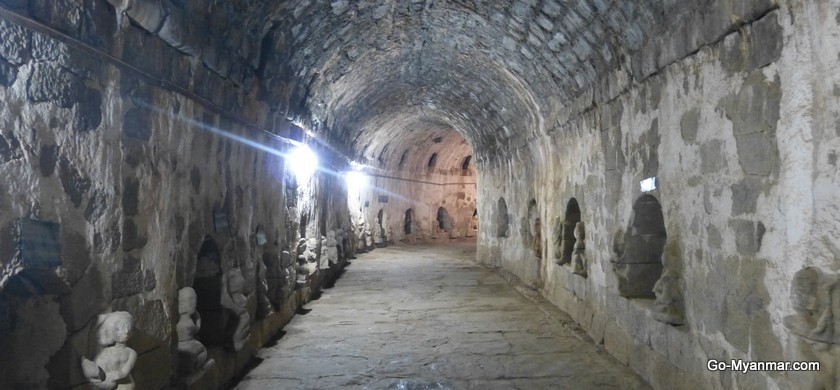 |
| Photo: Go - Myanmar |
At its zenith, Mrauk U was the centre of a kingdom which stretched from the shores of the Ganges river to the western reaches of the Ayeyarwaddy River. According to popular Arakanese legend, there were 12 'cities of the Ganges' which constitute roughly half of modern-day Bangladesh which were governed by Mrauk U, including Dhaka and Chittagong. During that period, its kings minted coins inscribed in Arakanese, Kufic and Bengali.
Much of Mrauk U's historical description is drawn from the writings of Friar Sebastian Manrique, a Portuguese Augustinian monk who resided in Mrauk U from 1630 to 1635.
The temples and pagodas
 |
| Photo: Shutterstock |
The monuments of Mrauk U are roughly split into northern, eastern, southern and western groups. There are hundreds of temples in Mrauk U, many of which primarily remain day-to-day places of worship for the local Rakhine villagers; what follows is a guide to the most beautiful and historically significant structures. Most temples have name plates in English, with date of construction.
You can see the location of all the temples and pagodas on free maps, which can be picked up at most hotels or at L’Amitié Art Gallery (located in the northern group, just north of the Shittaung Pagoda). Practical information, including how to get around the Mrauk U area, can be found further down this page. Unlike in Bagan, where some of the temples are shut, the interiors of virtually all the temples in Mrauk U are open and ready to be explored.
Religion
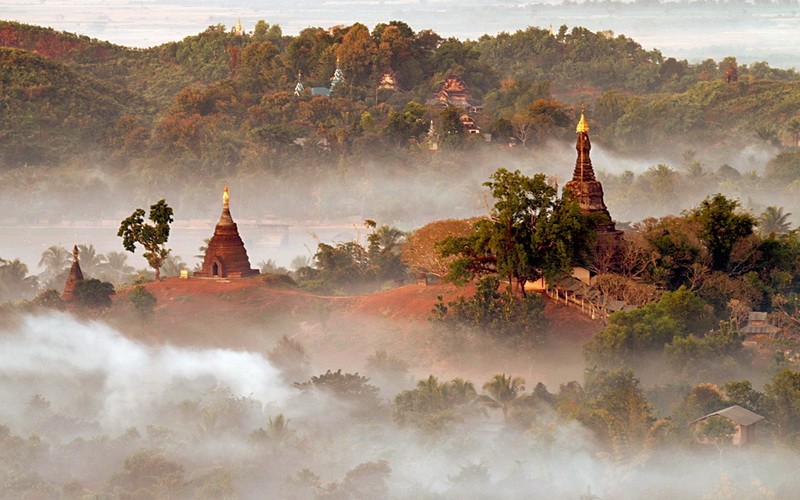 |
| Exotic Voyages |
As Mrauk U and her kingdom prospered, the kings, ministers and peasants built many pagodas and temples around the town to reflect their faith. Thus, Mrauk U houses a rich collection of temples and pagodas second only to the Central Burmese town of Bagan, in Myanmar. Most of Mrauk U's temples were constructed of hewn stone bricks, unlike the mud and clay bricks of Bagan.
The most notable temples in Mrauk U are the Shite-thaung Temple (Temple of 80,000 Images or Temple of Victory), Htukkanthein Temple (Htukkan Ordination Hall), the Koe-thaung Temple (Temple of 90,000 Images) and the Five Mahn pagodas.
In 2017, an international commission urged Myanmar to nominate Mrauk U for UNESCO World Heritage Site status. The proposal is backed by Kofi Annan and archaeologists are now cataloguing and protecting the city's many sites in preparation for nomination.
The Northern Group
This is the area with the biggest concentration of interesting structures in Mrauk U, as well the area’s best sunset viewpoint; it is also easily walkable from most hotels.
In the northern group you will find Mrauk U’s most famous structure, the Shittaung Pagoda, built in 1535 to celebrate the victory of King Min Bin over the twelve provinces of Bengal. Unfortunately, parts of the brick structure have been encased in concrete, as part of a wider modernisation and ‘Burmanisation’ of some of these traditional Rakhine temples.
However, the interior remains intact, and a labyrinth of stone Buddhas can be found in its outer ring of hallways; the inner ring features represenations of Arakan characters from centuries past, which have kept much of their vivid colour because they have never been exposed to the sun. The main prayer room on the east side of the pagoda features hundreds of Buddhas and elaborate artwork painted on the ceiling.
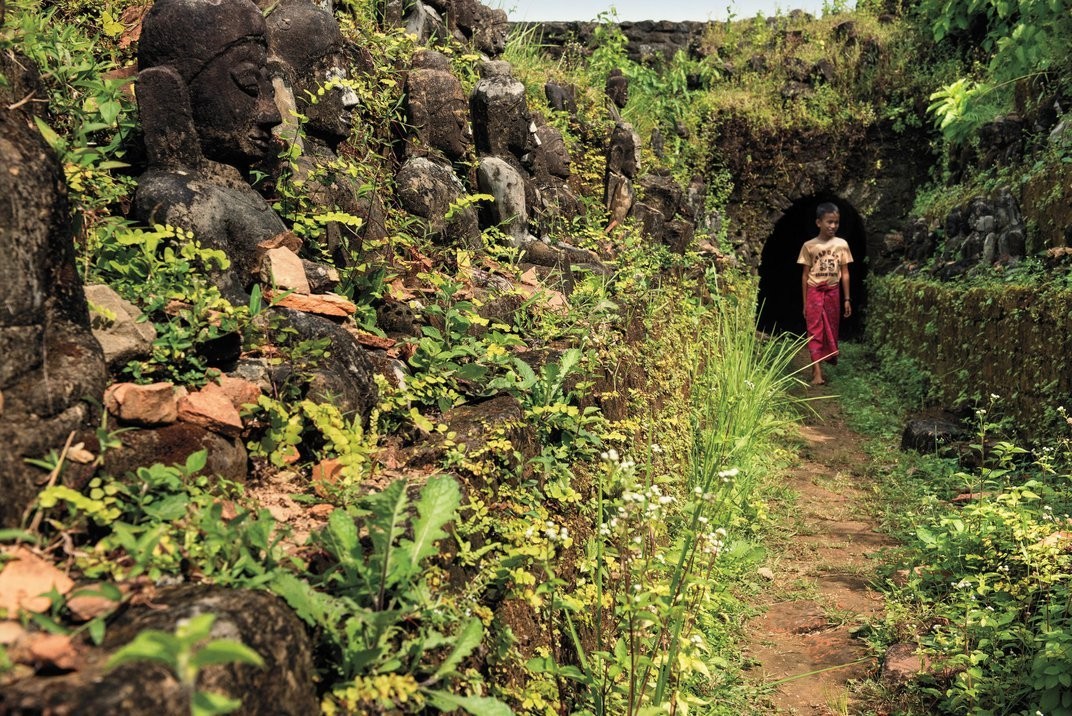 |
| Seated Buddha sculptures flank a passageway inside the ruins of Mrauk U’s largest temple, Kothaung, which sprawls a massive 230 by 250 feet. Mario Weigt / Anzenberger / Redux |
To the immediate northeast of the Shittaung Pagoda are Andaw temple and Ratanabon Zedi. A tooth relic of the Buddha is said to be enshrined at the Andaw temple (constructed in 1598), which features a prayer hall on its eastern side from which you can enter the temple itself. Inside you will find a central Buddha and circular vault with a number of stone Buddhas. The Ratanabon Zedi, built in 1612 by King Min Khamong and his queen, Shin Htwe, is a fine example of the unusual dark, brick-built, bell-shaped style that is common in Mrauk U. And immediatedly to its north can be found a hill which offers the most impressive views in the whole area – most dramatically at sunset.
To the north of Andaw and Ratanabon, you can find a beautiful, secluded rural valley lined with temples. On the eastern side, these include the golden-topped, hillside Ratasanrway and Ratahmankeen temples and the Mahabodhi Shwegu, which has a fascinating interior. These are followed by the Anawma Image (build in honour of Princess Anawzar in 1501), which is situated closer to the valley floor. Further up the valley to the west you will find the Laung Bwann Brauk pagoda (built 1525), although your way may be blocked by oxen bathing in mud! The walls of this pagoda feature remnants of colourful mozaic-like design.
At the end of the valley is the small Pitaka Taik, or ‘library of Buddhist Scriptures’ (built 1591). Not being a temple, this is one of the few structures in the area that you don’t need to take shoes off to enter. The remains of the ancient defences of Mrauk U bring a natural end to the valley walk, but if you fancy exploring further into the rural farmland, the hill is easily surmountable on small paths.
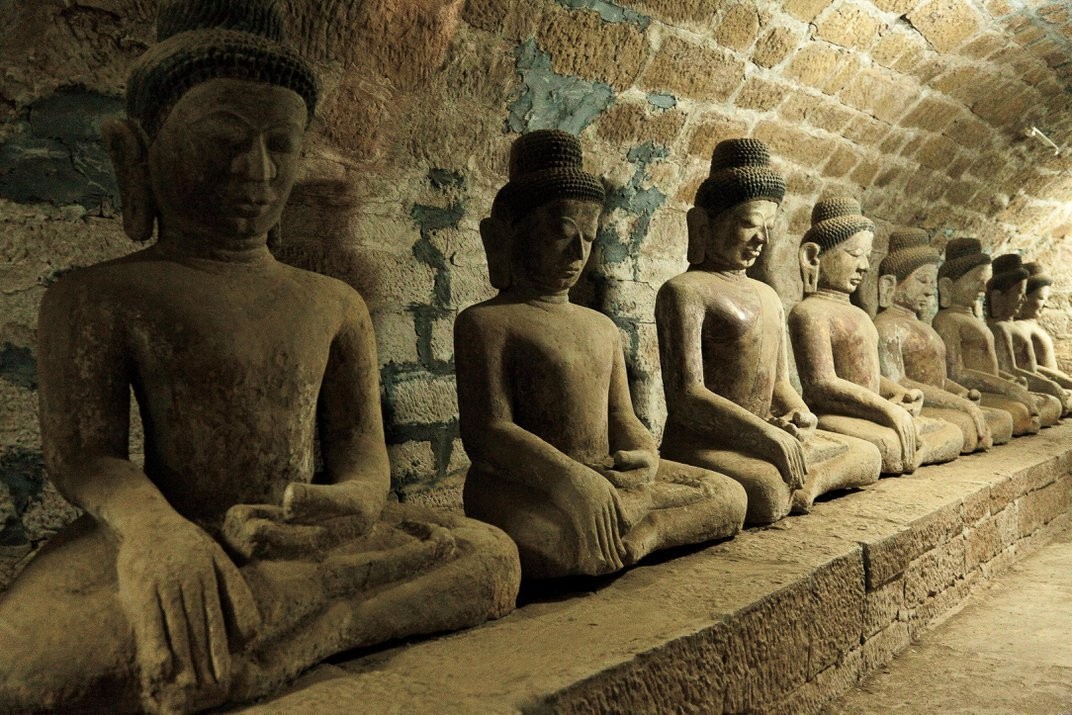 |
| The temple incorporates more than one worldview. The king, reported to a 17th-century Portuguese friar who traveled there, "admitted a few [Hindu] gods into his shrine," reflecting "the tolerance and charity of Buddhism." Hermis / Alamy Stock Photo |
Going back the central complex, opposite the Shittaung pagoda you can find the fortress-like Htukkanthein temple, built in 1571 by King Min Phalaung. It is made striking from the outside by its atypical militaristic design, set as it is on high ground and featuring fortified walls with small windows and only one entrance.
Inside the temple is every bit as unique and fascinating; its dramatic interior chamber spirals clockwise past hundreds of stone figures and Buddhas until you reach the centrepiece Buddha contained in the main dome.
The Eastern and Southern Groups
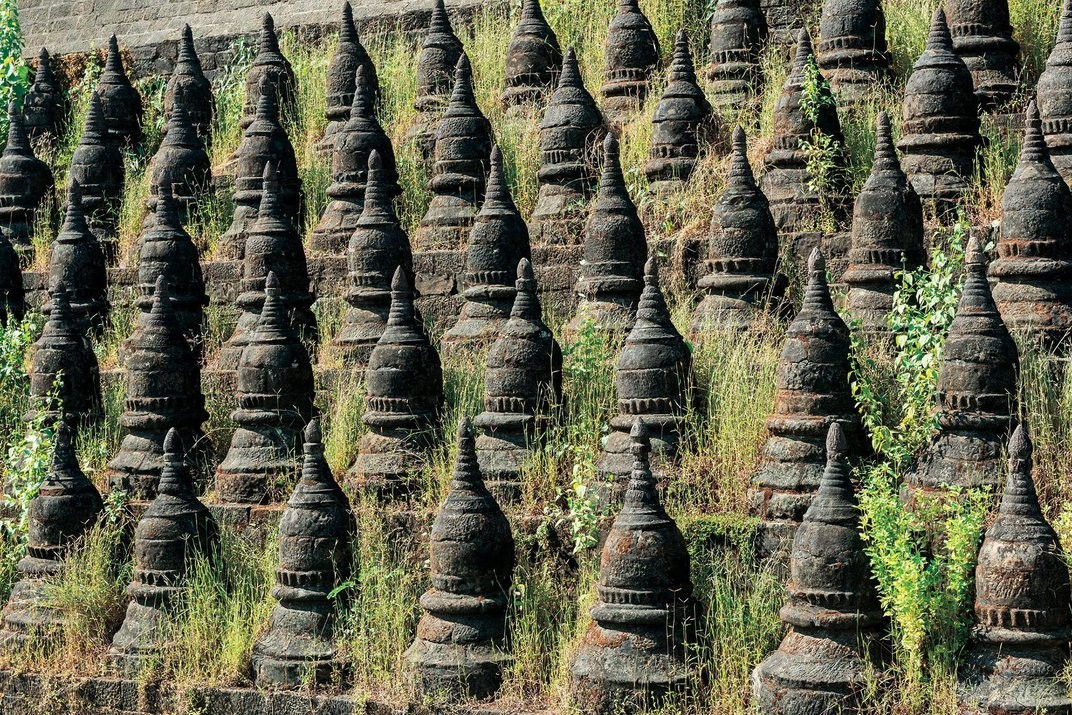 |
| On the terraces of the Kothaung temple, an elaborate array of miniature stupas, or dome-shaped shrines, replicate the structure’s signature architectural feature. Universal Images Group North America LLC / Alamy |
These groups are more spread out and in general don’t have temples on the same scale as the northern group (with the exception of the grand Kothaung temple), but are nevertheless fascinating and a must on any visit to Mrauk U. The best approach to exploring these temples, whether by car or bicycle, is to take an east to south loop.
Taking the eastern route out from the central palace area, leading out to the Kothaung temple, you will encounter the Mong Khong Shwe pagoda on your right and the Phara Ouk on a hill to your left, facing each other across the road – both worthy of a wander around.
From here you will continue along the road eastwards through a rustic village, after which you will find the hilltop Pizi Phara on your right (south) side. This monument, overgrown with plant life, features a circular enclosure with stone Buddhas facing the four points of the compass and one Buddha at the summit; they are intricately carved with wonderfully serene expressions. This, as well as great views of the surrounding paddy fields and the Kothaung temple immediately to the north, makes it well worth scrambling up the hill.
Heading back towards the centre of Mrauk U you can find the Sakya Manaung Pagoda. Built in 1629, it is more ornate than the older pagodas of Mrauk U, featuring golden and bejewelled tops to its structures and two colourful, sword-bearing figures at its entrance.
From here, you can take the road to the southern group. In the south east is the Shwe Taung pagoda, which is one of the highest points in Mrauk U and is popular spot for dawn views. Next along is the hilltop Zinamanaung Pagoda, a beautiful temple that offers panoramic views of the surrounding hills and Lattsaykan lake. There are in fact two pagodas to wander around up here, and to the east (across the valley) you can see a number of pagodas that have been consumed by vegetation, still clearly visible by their distinctive shape – but now the same colour as the trees that surround them.
A few hundred metres further along to the south west is Lattsaykan Gate, which was once one of the main gates into the city; little remains of the outer walls so this section is of particular interest. Immediately on the other side of the gate is is Lattsaykan lake, a picturesque stretch of water that was Mrauk U’s main reservoir.
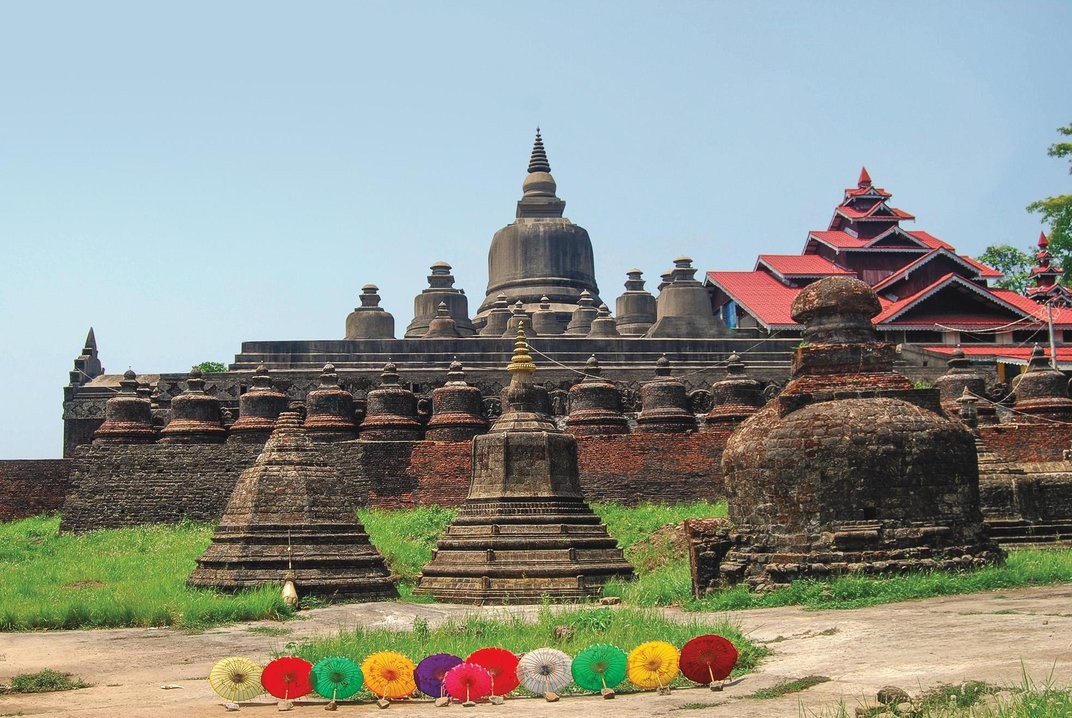 |
| Situated on a hill, fortresslike Shitthaung temple was both a monument to the Buddha and an impregnable refuge in wartime. Julian Hattem / Sopa Images / Lightrocket via Getty Images |
Heading west, you will find the Bandoola Kyaung, also known as the Sanda Munhni Phara Gri Kyaung Taik (and this is what it says on the name plate at the entrance). This sprawling monastery straddles several hills, and is said to hold a Buddha tooth relic. It is fun just to wander up and down the steps, witness the lives of the monks, and snoop around the artifacts that can be found in the monastery’s various rooms.
There are also a collections of temples and pagodas in the smaller western group, but whether you decide to visit these depends on timing and your energy levels!
| The best way to get around Mrauk U is either to hire a bicycle for the duration of your stay (as always being mindful of the heat), or hire a Jeep for the first day to explore the eastern and southern groups of temples, and then discover the northern group on the second day by foot. A Jeep (usually open top but with a cover for sun protection) will cost around K25,000 per day; that will likely come with a non-English speaking driver who should nevertheless be able to tell you temple names. An English-speaking guide will cost significantly more. If you are looking for places to eat, for the most part Mrauk U offers simple teahouses and beer stations, most of which are in the area surrounding the palace. Happy Garden Restaurant is one of the most pleasant, with its leafy garden and well prepared mixture of Rakhine and Burmese food; it can be found opposite Tha Kan Hla Lake just to the west of the palace, next to Golden Star guest house. The number one spot for foreigners is Moe Cherry restaurant; it is slightly more expensive than the other options, but generous portions of tasty local dishes are served out by the friendly owner, who is also the chef. It is located on the main road to the east side of the palace. |
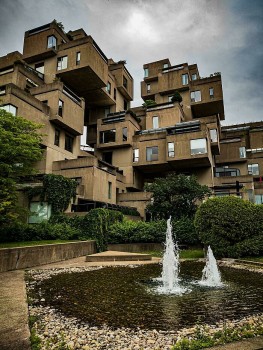 | Discover The Most Extraodrinary Architectures In The World From East to West, there are many stunning, outstanding and unique architectures that were the magnificient creations of art. Take a look at them in ... |
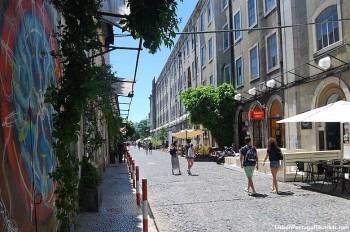 | Time Out: Top 10 “Coolest” Streets In The World Streets are where life happens: The bustling atmosphere, the crowds, street arts, coffee shop, fashion and music. Timeout Magazine has come up with a list ... |
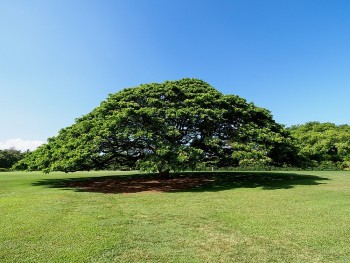 | Visit The Millions Dollar Tree: The Symbol of Successful Commercials Hitachi tree, the giant, century-old monkeypod has served as the advertising logo for Japanese electronics giant Hitachi. It's one of the most beloved corporate symbols ... |
Recommended
 Travel
Travel
Vietnam Through Australian Eyes: Land of Flavor, Warmth, and Timeless Charm
 Travel
Travel
Strategies for Sustainable Growth of Vietnam’s Tourism from International Markets
 Travel
Travel
Vietnam Strengthens Its Presence On The Global Tourism Map
 Multimedia
Multimedia
Phong Nha-Ke Bang National Park Named Top Adventure Travel Site
Popular article
 Travel
Travel
Vietnam Welcomes Record-High Number of International Visitors
 Travel
Travel
Luxury Train From Hanoi To Hai Phong To Be Launched In May
 Travel
Travel
Phong Nha Named Top Budget-Friendly Travel Destination for Spring 2025: Agoda
 Travel
Travel




